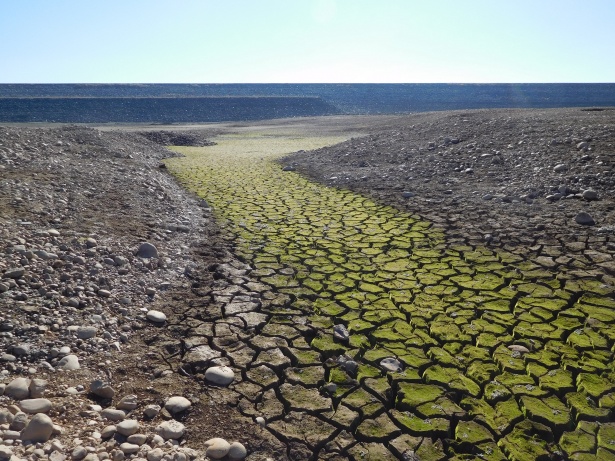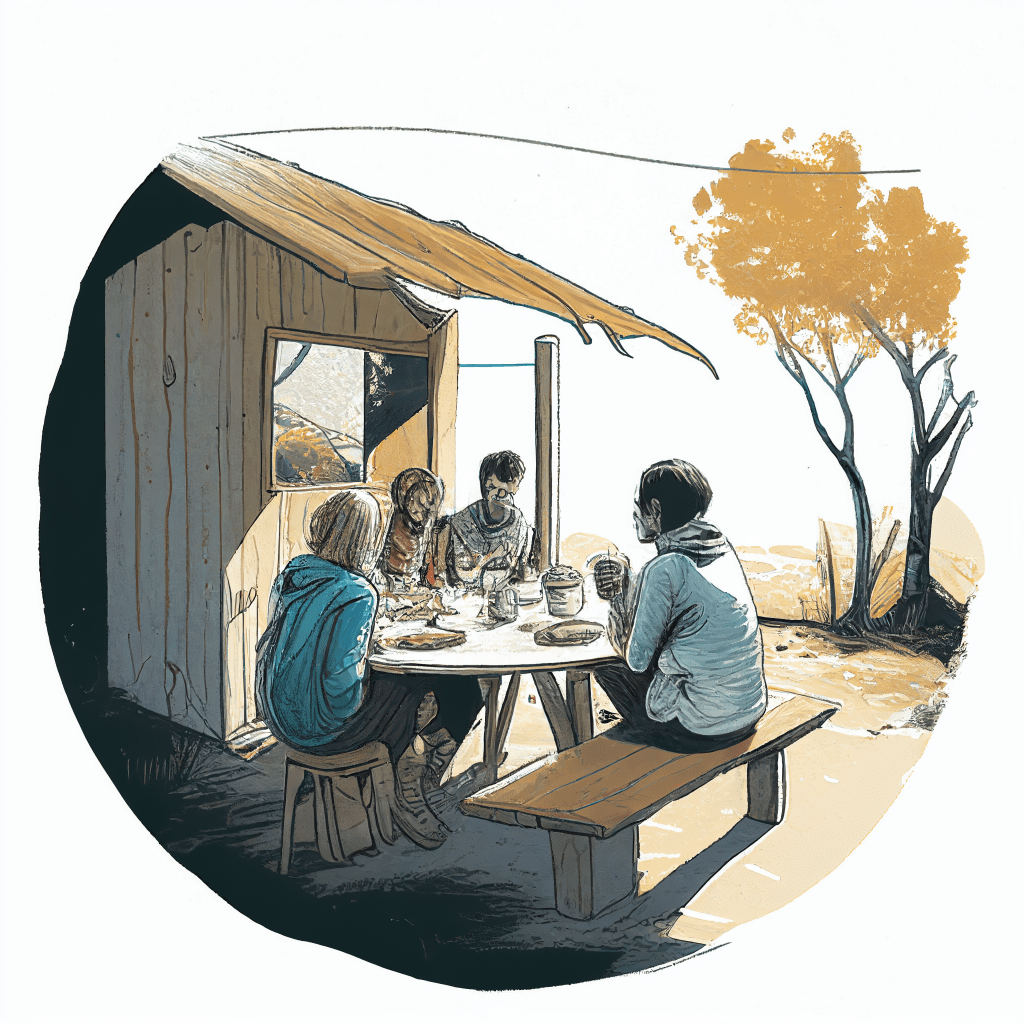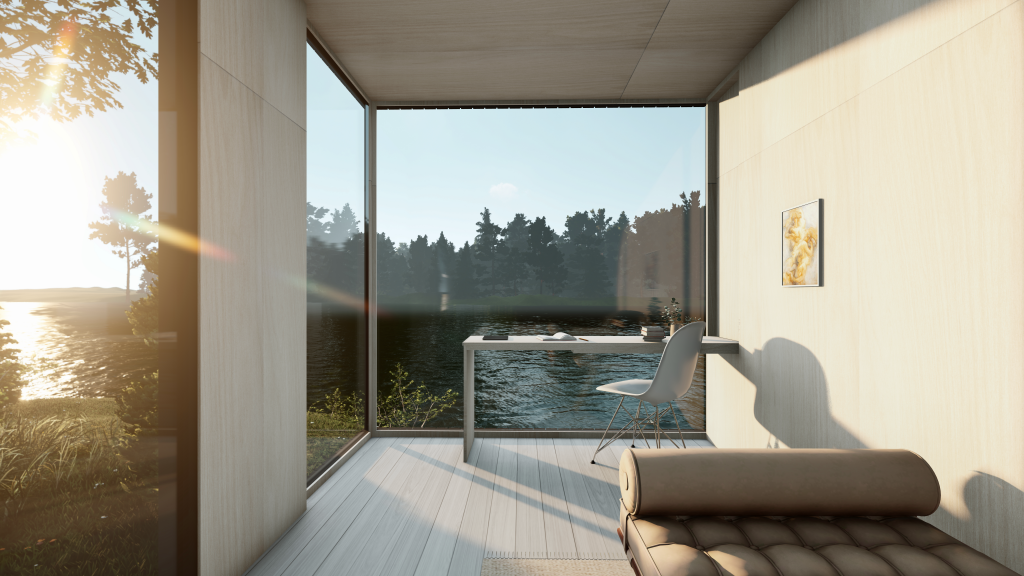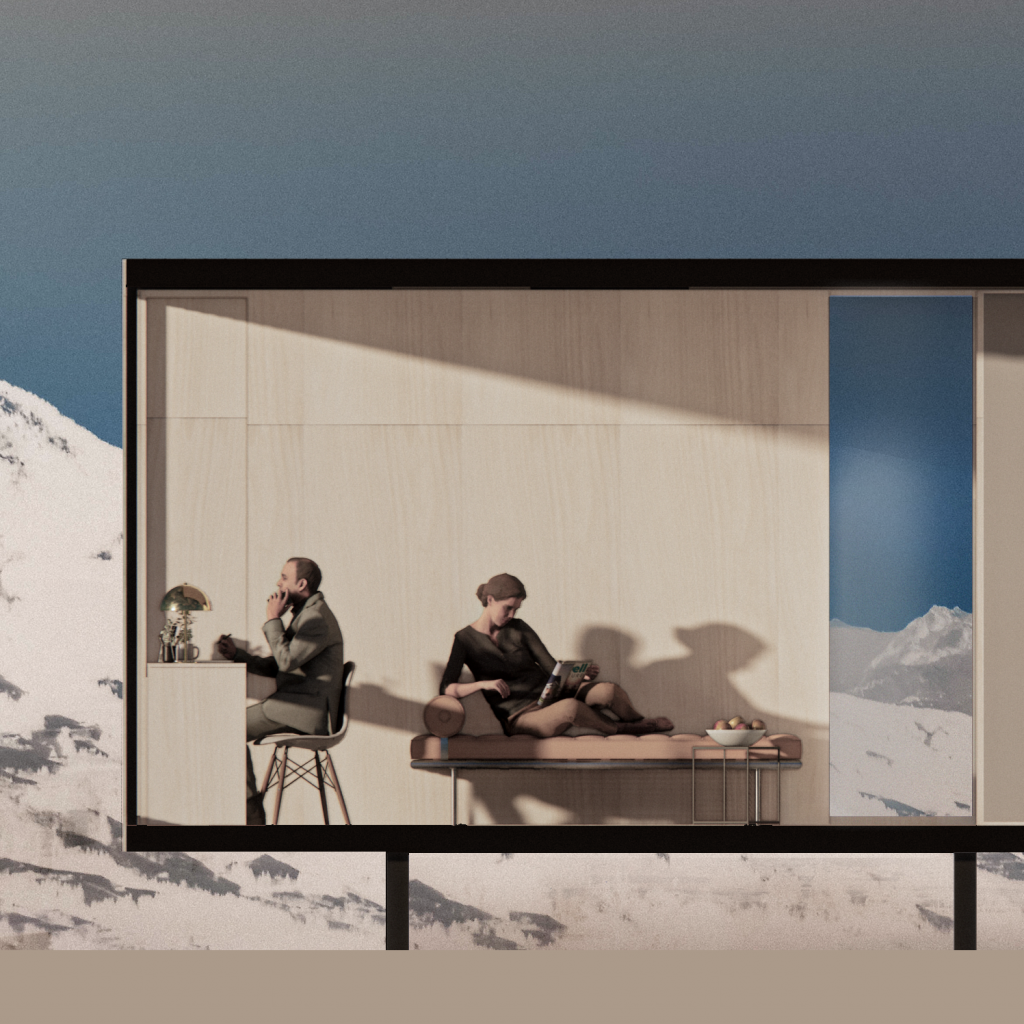Minimalist Living Spaces: A Powerful Tool for Boosting Emotional Wellness and Coping with Natural Disasters and Pandemics
The transition to sedentism marked a critical juncture in human history, as it represented a move away from a nomadic lifestyle and towards permanent settlements. This shift enabled humanity to cultivate the land and build more stable communities. However, it also meant that humans were now more vulnerable to the destructive forces of nature.
Natural disasters and pandemics have been among the biggest challenges faced by humanity since the advent of sedentism. According to data from the National Wildlife Federation, these events have become more frequent and severe over the past century. While large portions of the United States are at risk of hurricanes, floods, and wildfires, several earthquakes that hit the eastern south of Turkey and western north of Syria have caused extensive destruction. The effects of all these natural disasters, along with the pandemic that the world is struggling with globally in 2020, have resulted in millions of people having to leave their homes and regions.


The impact of natural disasters and pandemics goes beyond the physical damage they inflict. These events can also cause significant psychological changes, leading people to seek greater security and simplicity in their lives by turning to minimalist living spaces. As more and more people become drawn to the idea of minimalist living, they seek to escape from the suffocating and crowded city life and feel more secure.
In a world where natural disasters and pandemics are increasingly common, let’s take a look at how minimalist living spaces provide people with a sense of stability and security on a psychological level.


Minimalism & Emotional Well-being
Thanks to COVID and digital nomads (Unpacking Neonomadism: The Ultimate Guide to Full-Time Mobile Living), minimalism has gained popularity in recent years. At its core, it involves living with less by decluttering possessions, simplifying lifestyle, and prioritizing experiences over material goods. Minimalism promises to reduce stress and increase mindfulness, but it’s also essential to consider its impact on sustainable living. Let’s analyze the effect of the minimalist lifestyle movement in correlation with sustainable living.
Purdue University’s recent research, titled ‘Sustainable Production and Consumption,’ focuses on the impact of minimalist living on the well-being of individuals. The 2021 study clearly indicates a direct correlation between improvements in individuals’ well-being and minimalist lifestyles. People who embrace minimalist living prefer these residences because they are more financially accessible and promote self-sufficiency.
In addition, minimalist living spaces offer several emotional benefits. Living with fewer material possessions means less clutter and fewer distractions, which can contribute to a more peaceful and calm living environment. People who live in minimalist spaces may feel more in control of their surroundings, which can reduce anxiety and stress. In a world where natural disasters and pandemics are becoming more common, minimalist living spaces can be seen as a haven, providing people with a sense of stability and security.


Visual about refugees that start new lives in tiny houses. Made by AI Image generator Midjourney.
Perfect Combination of Smart Living & Minimalism: Serai One
Minimalist living spaces have become increasingly popular as people seek simplicity and security in a world that is becoming more complex and unpredictable. However, minimalist living does not mean sacrificing comfort or convenience. In fact, minimalist living spaces can be enhanced with technology to provide a more personalized and comfortable living experience.


Serai One is a perfect example of the fusion between smart living and minimalism. This futuristic living space utilizes predictive artificial intelligence technology to control lighting, entertainment systems, and security features. This technology is designed to learn the people’ preferences and adjust settings accordingly, creating a more personalized living experience.
Serai One’s proprietary technology analyzes users’ behavioral data and provides personalized recommendations with the help of multiple sources, such as sensors, smart devices, weather reports, and calendars. The collected data is used to make the user’s life easier and safer. Serai One provides a unique and innovative way to experience minimalist living while also being environmentally conscious with its sustainable materials and design.
Minimalist living spaces offer numerous benefits to individuals seeking a simpler and more secure way of life. They also promote conscious consumption, thereby contributing to sustainable living. Serai One is a perfect example of how technology and minimalism can work together to create a more personalized, comfortable, and environmentally friendly living space. The fusion of Scandinavian charm with minimalism and practicality makes Serai One an excellent choice for those seeking a futuristic and sustainable living space.
If you are interested in experiencing this innovative way of life, please take a look at our other blog posts:
Discover the Serai Way of Life: Living Environment for every day Details
The Art of Minimalist Living: Exploring the Rising Trend of Minimalist Spaces in the 21st Century
Serai Design Office: Building Architectural Sections with a Focus on Serai One – A Zoomed-In Look
Also, don’t forget to visit our website!
www.seraispaces.com
References
- Lieberman D.E., Seasonality and gazelle hunting at Hayonim Cave: new evidence for “sedentism” during the Natufian, Paléorient, 1991, volume 17, issue 17/1, pp. 47–57
- National Wildlife Federation. “Climate Change, Natural Disasters, and Wildlife”
- Kang J, Martinez CMJ, Johnson C. Minimalism as a sustainable lifestyle: Its behavioral representations and contributions to emotional well-being. Sustainable Production and Consumption. 2021; 27:802-813.
- MoMA – Minimalism”. MoMA Learning. 2012
- 2. Kang J, Martinez CMJ, Johnson C. Minimalism as a sustainable lifestyle: Its behavioral representations and contributions to emotional well-being. Sustainable Production and Consumption. 2021; 27:802-813.
- 3. Roster Catherine A., Ferrari Joseph R, Jurkat M. Peter, The dark side of home: Assessing possession ‘clutter’ on subjective well-being 2016; 32-41


